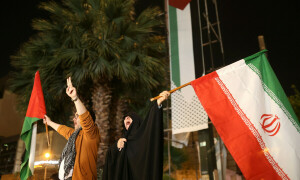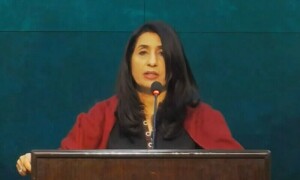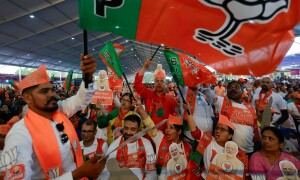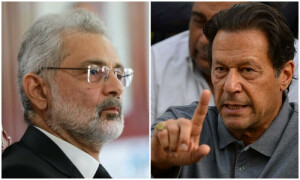Over the past few days, the Koh-i-Noor, the 105-carat diamond that is currently part of the British crown jewels, has been in the news as various claimants have called for the legendary gem to be returned to its ‘rightful’ owners.
However, determining just who these ‘rightful’ owners are is not easy, as the gem was taken away from the subcontinent by the British in the 19th century, during the age of empire, before today’s borders were drawn up. Hence the claims and counter-claims about the ‘true’ ownership of the gem have also sparked a lively debate about where the treasures taken away from colonised lands and now sitting in museums in London, Berlin and Paris, really belong.
The priceless gem that is said to have originated in the Deccan, specifically in the mines of Golconda, is being contested by various claimants in Pakistan and India, while calls have also been made from Afghanistan in the past to return it. The British, for their part, appear to be in no mood to let go of the jewel in the crown.
On Monday, India’s solicitor general told the country’s supreme court that the Koh-i-Noor had been “given to the Britain and not stolen”, indicating that there were no plans to lobby for its return. However, the Indian government appeared to backtrack on Tuesday, with the ministry of culture saying it “reiterated its resolve to make all possible efforts to bring back the Koh-i-Noor diamond in an amicable manner.”
The Shiromani Gurdwara Parbandhak Committee, a Sikh religious body in India, says the diamond rightfully belongs to them, while the Taliban, when they ruled Afghanistan, had also staked a claim back in 2000. However on a visit to India in 2013, British Prime Minister David Cameron had flatly refused to entertain any suggestion of returning the gem to India, saying he did not believe in ‘returnism’. Along these contenders, a Pakistani lawyer has also been leading a campaign to have the gem brought to this country.
The reason for so many competing claims over the diamond, as renowned historian Dr Mubarak Ali points out, is that the gem, over the centuries, had changed hands many times.
“In 1849 it was with Duleep Singh [son of Maharaja Ranjit Singh. Earlier] Mughal mansabdaar Mir Jumlah had given it to Shah Jahan. Nader Shah [Afshar] took it with him. When Shah Shuja came to Hindustan, he brought it with him. During Ranjit’s time Shah Shuja had had arrived in Lahore. Ranjit Singh knew he had [the diamond] with him and that it was in Shah Shuja’s turban. There are two stories about how it exchanged hands; according to one Ranjit offered to become a pagri-badal bhai of Shah Shuja, thus exchanging turbans and with it, the diamond. The other suggests that Shah Shuja was forced to hand it over to Ranjit. The English took it from Duleep Singh and presented it to Queen Victoria.”
Considering that the Sikh rulers of Punjab were the last owners of the prized gem before it was spirited away to Europe and presented to the ‘Empress of India’, a Lahore-based lawyer is leading a zealous campaign to have the gem brought back to Pakistan.
Barrister Jawaid Iqbal Jafree has filed a writ petition with the Lahore High Court to get the British to return the Koh-i-Noor and claims to have struggled for decades to return the gem to its ‘rightful’ place.
“I was a law student in 1958. I raised the issue in Punjab University Law College. It was taken from Lahore fraudulently. Since then I have been trying [to get it back],” says the barrister, while claiming to have raised the issue with Queen Elizabeth II herself, as well as with Margaret Thatcher.
“The diamond belongs legitimately to the Takht-i-Lahore, which became Punjab and Pakistan. We inherited the diamond. It is the cultural heritage of the people of Punjab and people of Pakistan. It was not gifted [to Queen Victoria]. We have a superior claim. The government of Pakistan” should make an effort to recover it, he insists.
However, as Dr Mubarak Ali points out, despite the legitimacy or otherwise of rival claims, the fact is that the chances of the Koh-i-Noor returning to the subcontinent are slim.
“Who owns it is a difficult question. In the pre-Partition period it [could be said to belong to] Hindustan. [Today] India claims it, as do we. The Mughals are no longer around. It was war booty; who returns war booty? Those who have power keep the spoils.”
Published in Dawn, April 21st, 2016
















































